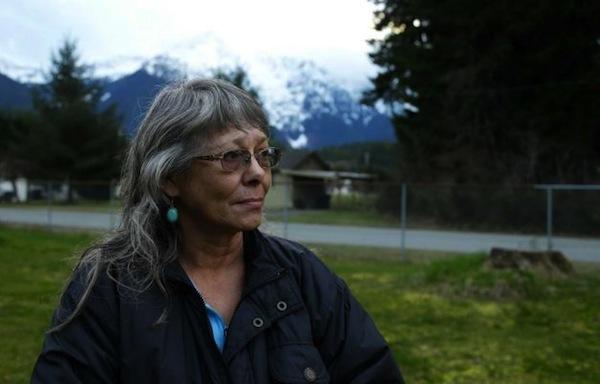
Robin Youngblood poses for a photo Thursday, March 27, 2014, with Whitehorse Mountain behind her in Darrington, Wash. Youngblood survived the massive mudslide that hit the nearby community of Oso, Wash. last Saturday, and was rescued by a helicopter as she floated on a piece of a roof.
Source: Indian Country Today Media Network
Wind and rain over the weekend have been hampering recovery efforts in the one-square-mile debris field that used to be Oso, Washington before it was obliterated by March 22’s devastating landslide.
The official count of the dead rose to 18 on Saturday March 29 as more bodies were pulled from the wreckage, but the number of missing was reduced to 30, from 90. One of the confirmed fatalities was 4-month-old Sanoah Violet Huestis, who was being babysat by her grandmother, 45-year-old Christina Jefferds. Jefferds also perished. In all, authorities had confirmed 17 dead by Friday evening March 28, though they had found several others who were not yet added to the total, pending identification.
RELATED: At Least 108 Could Be Missing in Washington State Landslide Near Sauk-Suattle Territory
Robin Tekwelus Youngblood was one of the survivors, though she lost everything except a painting. The Okanagon/Tsalagi woman was sitting in her house with a friend, she told the Associated Press, when she heard a roar that sounded like a crashing airplane, then looked out the window just in time to see a wall of mud hurtling toward her mobile home. Within seconds, it was all over.
“All I could say was ‘Oh my God’ and then it hit us,” she told AP. “Two minutes was the whole thing.”
The force of the slide tore off the roof and shoved her mobile home upward. Youngblood and the friend were able to dig out and waited about an hour for help.
Tribes have rushed in to donate personnel, money and other assistance.
RELATED: Tribes Assist Landslide Relief Effort With Personnel, Donations and Prayers
Youngblood, whose Cherokee family helped found the nearby town of Darrington in the early 1900s, is still coming to terms with the devastation. Forced out of their homelands when the Cherokee were relocated to Oklahoma and Arkansas, Youngblood’s family had kept going and moved to Washington, AP said. Youngblood moved back to the area from Hawaii, where she had been living until about two years ago.
“Several times this week I’ve said, ‘I need to go home now,’ ” she said. “Then I realize, there’s no home to go to.”
The cherished painting, named “Wolf Vision,” is of a Cherokee warrior, according to the Seattle Times. It came floating by as she clung to the wreckage of her roof, waiting for rescuers. It now is one of her few remaining possessions.
“I’m grateful to be alive,” Youngblood told AP. “I have no idea how I came out without being crushed from limb to limb.”
Read more at http://indiancountrytodaymedianetwork.com/2014/03/30/native-landslide-survivor-describes-devastating-wall-mud-missing-reduced-90-154234



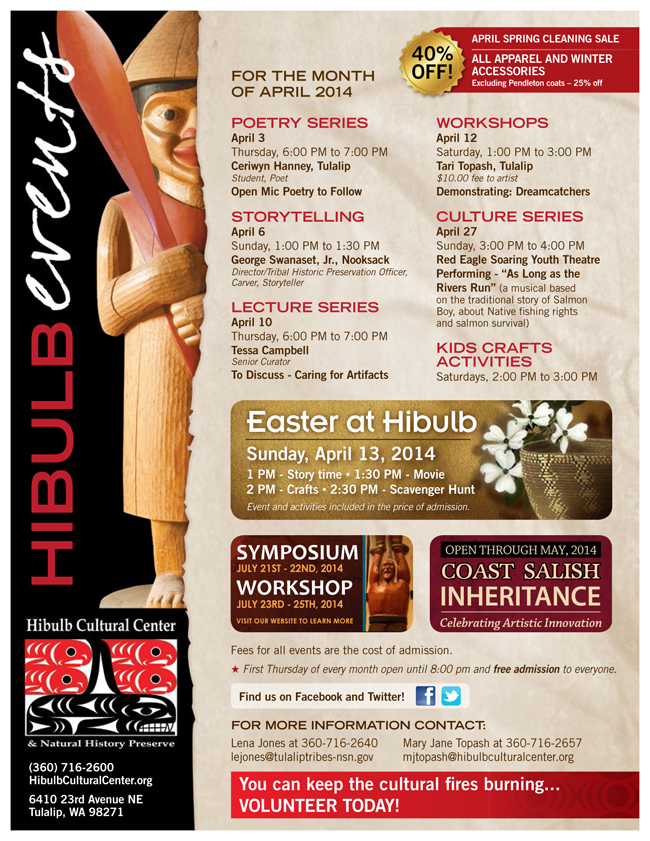




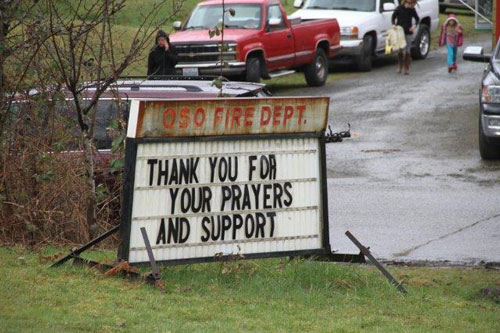

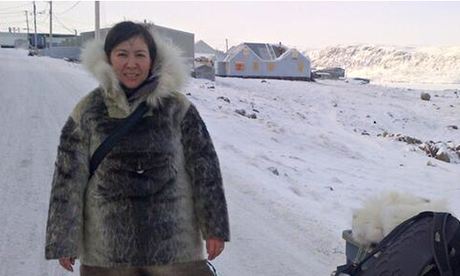


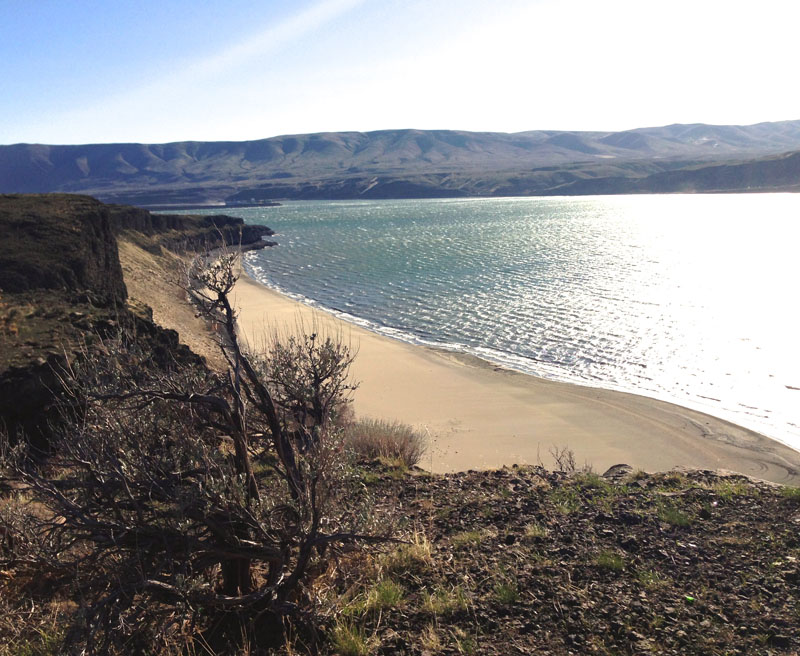

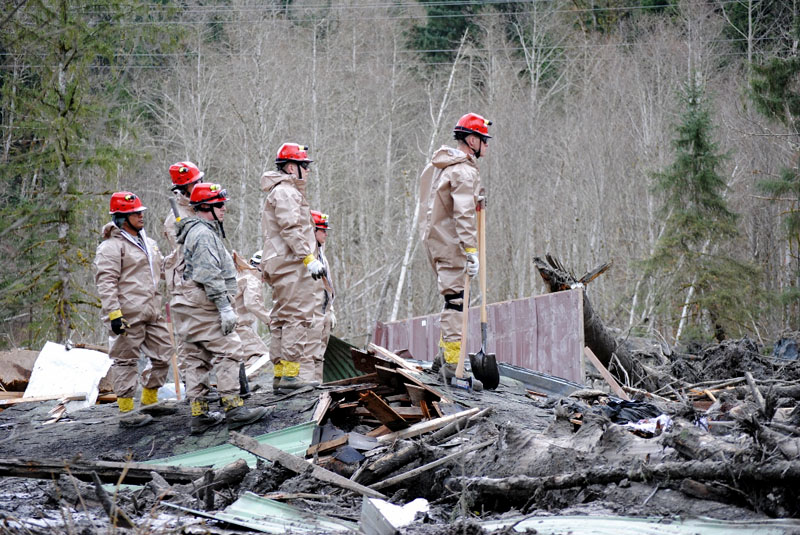

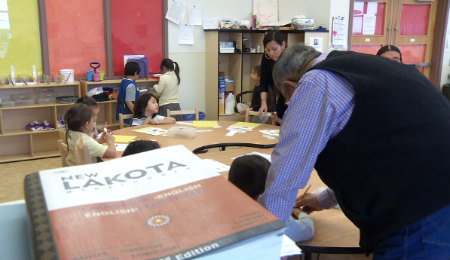 Students at the Lakota Language Nest speak a language that many have forgotten.
Students at the Lakota Language Nest speak a language that many have forgotten.